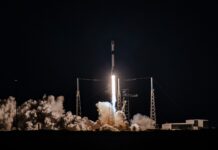Two separate incidents involving astronauts stranded in orbit within a year of each other have sparked urgent calls for a dedicated space rescue capability.
The most recent situation unfolded when China’s Shenzhou-20 mission, carrying three astronauts who had already handed over operations of the Tiangong space station to a new crew, was forced to postpone its return to Earth on November 5th. The cause: suspected damage from small space debris impacting the spacecraft. While the China Manned Space Agency (CMSA) assures that “emergency plans and measures” are in place, specific details about the incident remain scant, leaving experts grappling for clarity. This lack of transparency fuels concerns about a broader problem – the absence of open communication regarding such events within the space community.
This incident follows closely on the heels of Boeing’s Starliner mission last year which faced propulsion and thruster issues en route to the International Space Station (ISS), forcing NASA astronauts Butch Wilmore and Suni Williams to extend their stay beyond the planned ten days. While they eventually returned safely aboard a SpaceX Crew Dragon capsule, these incidents underscore just how precarious situations can become when relying solely on pre-existing station docking capabilities as a safety net.
“Both incidents have occurred during missions to a space station, where the station can act as a safe haven until a rescue plan can be put in place,” explains Jan Osburg, a senior engineer at RAND Corporation and expert on space policy. “But especially on the commercial side there are ‘free-flyer’ missions where docking with a station is typically not an option, and rescue has to happen quickly due to limited on-board supplies.”
The lack of standardized docking systems, reliable communication protocols, and formalized rescue coordination procedures across different spacecraft makes responding effectively to emergencies a significant challenge. Osburg stresses that establishing a dedicated space rescue capability doesn’t necessitate massive government spending or new agencies.
“It could be done with a few million dollars per year,” he argues, suggesting the formation of an independent non-profit organization focused on advocating for standardization, conducting planning exercises, and acting as a central point for operational coordination during actual incidents.
The urgency lies in preventing future scenarios from becoming desperate situations – ensuring astronauts don’t become passengers trapped in their own orbital dilemmas, waiting for unlikely rescues. As Osburg concludes, “Hopefully something is set up soon, before the next incident happens.”
































